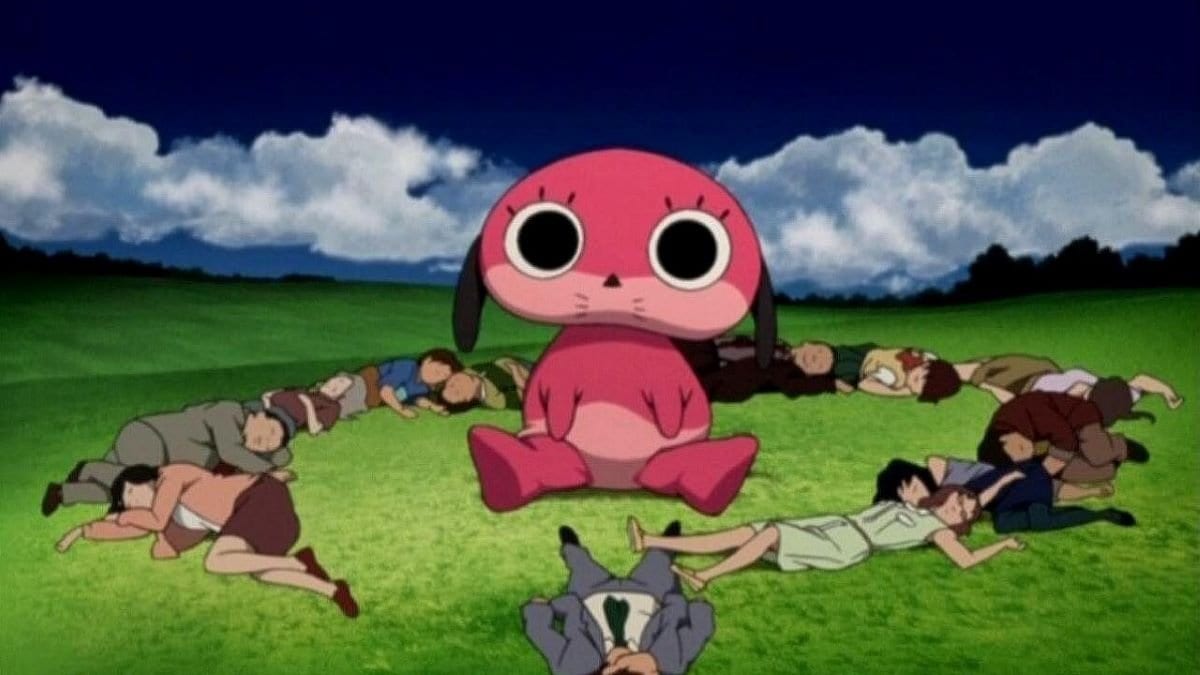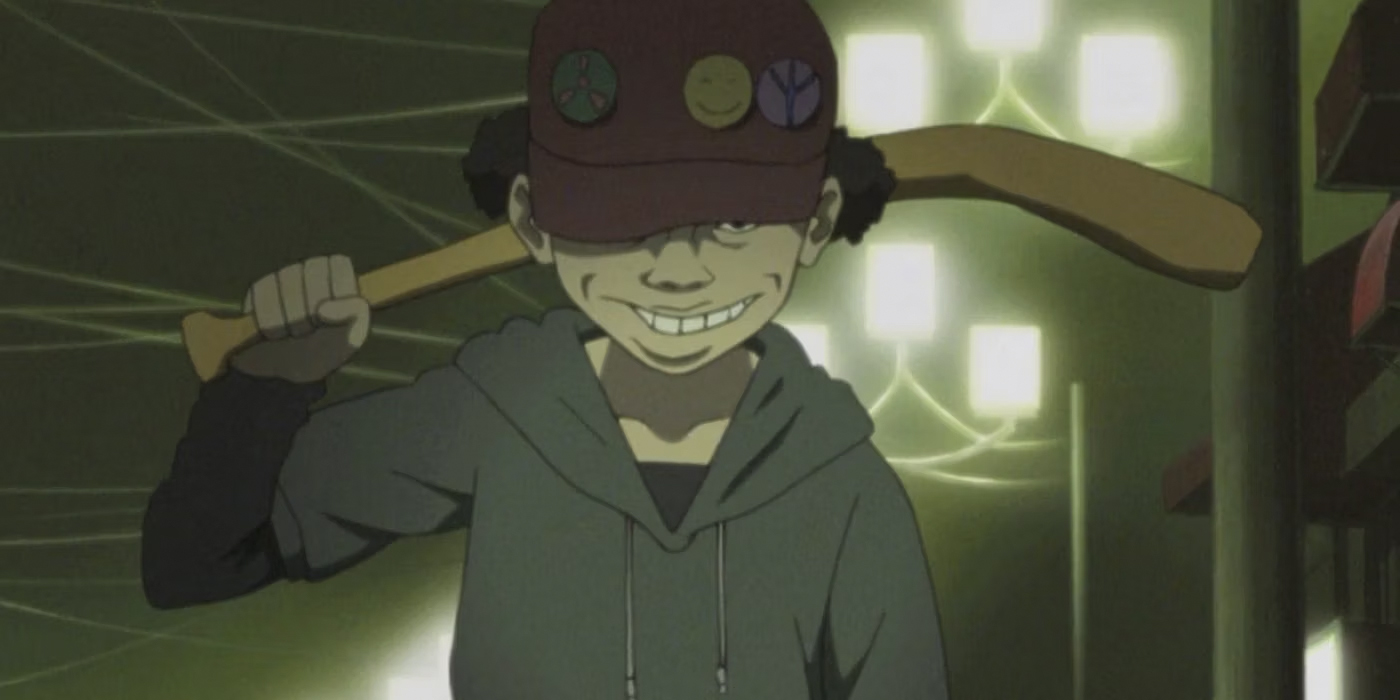In 1984, Satoshi Kon embarked on his anime career, leaving a significant mark with several important works, notably “Perfect Blue” and “Paprika.” Particularly, “Paprika” established itself as one of his most successful works, known for its influence on “Inception,” with scenes that bear a striking resemblance to each other. Satoshi Kon, a colorful individual who seeks to delve into the depths of the mind and create mind-boggling works, makes it both enjoyable to watch what he creates and challenging to keep up with his prolific output. Whether you comprehend anime or not, his animations are like vibrant journeys of madness akin to rainbows. Indeed, this difficulty is what makes his anime creations so captivating.
“Paranoia Agent” is an anime series Satoshi Kon put his signature on in 2004. If you happen to be a fan of “Perfect Blue” or “Paprika,” you will likely adore “Paranoia Agent.” Satoshi Kon pushes the boundaries of the mind even further this time.
To briefly touch upon the plot… Tsukiko Sagi achieves tremendous success with her creation, a pink dog toy named Maromi, which became a massive mascot adorning every corner of the city. Everything, without exception, becomes Maromi. After this significant success, the company asks Tsukiko to design a brand-new toy. However, Tsukiko cannot handle the new mission assigned to her and buckles under the enormous pressure. Stress engulfs her entire being. Just as she is about to lose her sanity, a child appears with rollerblades on his feet and a broken baseball bat in his hand, assaulting her. This attack on Tsukiko became the headline of all news bulletins. The mysterious assailant, given the name Shonen Bat, suddenly becomes the new legend of the city. Whenever someone starts to crumble under the weight of stress at any point in the city, Shonen Bat appears and attacks them. The attacks that begin with Tsukiko eventually become a series of incidents, and Shonen Bat turns into the city’s dreaded nightmare.

Satoshi Kon exhibits a particularly intriguing approach in “Paranoia Agent.” Compared to his other works, “Paranoia Agent” is notably more successful, especially in terms of its narrative. This demonstrates his development and broadened perspective. Instead of a uniform anime narrative, “Paranoia Agent” employs transitions, narrative changes, and various uses of time in the script, making it a compelling story and technically proficient. Its approach keeps the audience engaged without ever becoming tedious.
The anime primarily focuses on Japanese entertainment culture while delving into people’s daily struggles and changing moods. Much like the television industry everywhere, the Japanese entertainment industry is under immense pressure to produce massive hits in a short period. Consequently, everyone involved in these productions is burdened with stress. Conversely, people on the streets have turned the entertainment produced by these stressed individuals into their mascots, adorning everything from bags to shoes with the faces of these mascots. The anime attempts to depict the difference between ordinary citizens on the street and the stressed individuals locked in their offices through the lenses of business, crime, and children. It accomplishes this by focusing on different characters in each episode.
Understanding the reason behind it is challenging, but following Tsukiko’s attack, Shonen Bat’s assaults intensify. Those who are already stressed become even more agitated by the presence of a maniac who could suddenly strike them in the head with a baseball bat at any moment. Tsukiko’s attack somehow becomes connected to others, gradually affecting everyone. The journey of “Paranoia Agent” begins here. In the anime, we encounter a new person in almost every episode, and everyone seems disconnected from the real world. In this regard, I must admit that I love the woman who is a teacher in the mornings and an escort in the evenings the most. The police have one question that could partly answer all the anime’s questions:
“Are you so intellectually challenged that you cannot distinguish between reality and fantasy?”
Nearly everyone we encounter in the anime has become detached from the realities of the world, living in a realm of imagination and, to some extent, losing their grip on sanity. As the atmosphere of stress spreads, the number of people who could be targeted by Shonen Bat also increases. As stress levels rise, these disconnected individuals begin to converge one by one on a thin line. Satoshi Kon’s storytelling approach in this regard is quite intriguing. He employs predominantly absurd language, jumping from person to person and topic to topic. The absurdity of it all, I must admit, greatly amused me. Instead of returning to reality after Shonen Bat’s attacks, individuals who have disconnected from the real world start concocting superstitions through Shonen Bat and seize the opportunity to become famous. They attempt to leverage the power of virality to propel themselves into the limelight.

Similar to “Perfect Blue,” “Paranoia Agent” is a perplexing anime. True to its name, it perpetuates a never-ending state of paranoia in the story. The decisions people make, their actions, the state the city falls into, and the fact that all of this is attributed to a rollerblading boy with a golden bat actually lends a comedic aspect to the anime. Satoshi Kon, who narrates our city’s problems and nervous breakdowns through Shonen Bat, wants to convey that even though there may not be a certainty, everything can be overcome and that everything is, in fact, a form of madness. However, when the solution is so simple, the city chooses to descend further into madness rather than recover.
In essence, if you are looking for an intriguing, captivating yet quite challenging anime to watch, “Paranoia Agent” is definitely one you should consider. If you are already familiar with Satoshi Kon’s works, you know him and have full confidence in him. Among the many characters, you may find one with whom you can identify closely and critically examine yourself from an external perspective. “Paranoia Agent” is, in a way, a somewhat exaggerated reflection of real life.